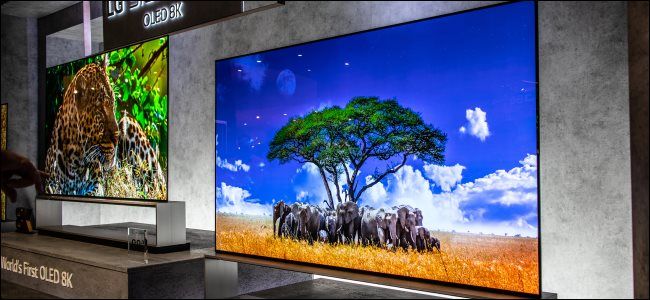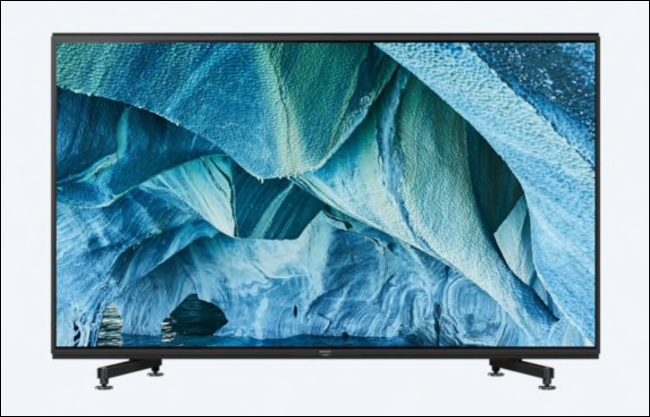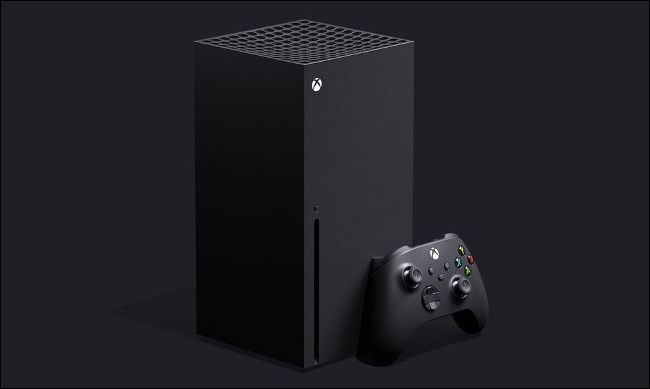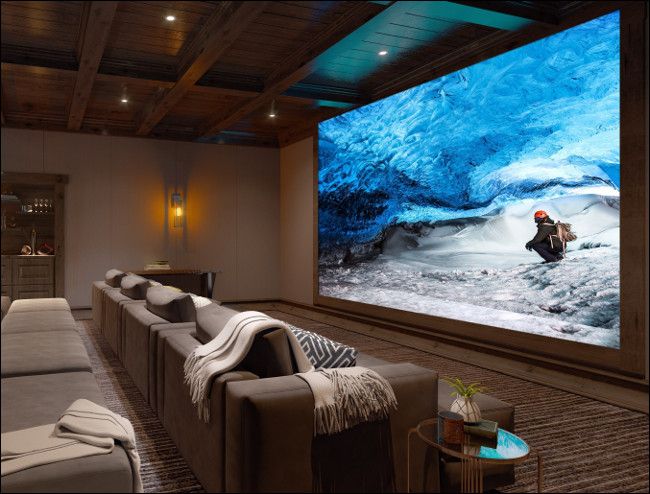Quick Links
You've barely peeled the protective film off your 4K TV, and already the conversation has switched to the next big thing: 8K. So, what exactly is 8K, and how long will it be before it's worth upgrading?
When the Price Drops
The biggest barrier for the average consumer is price. We've finally hit a point where 4K displays are relatively affordable. That price will drop further still as more 4K displays are manufactured and sold on a large scale.
Panel technology is constantly evolving. In 2019, 8K TVs debuted on the market and dominated the floor at CES 2020. All major panel manufacturers now produce them, including audiovisual giants, like Samsung, LG, and Sony.
Fledgling technology is expensive because the economy of scale simply isn't there. It's hard to minimize costs when your primary customers are early adopters. Now that these panels are entering large-scale production, the price of manufacture will begin to fall.
Sony released one of the first 4K TVs for sale in 2012 at a cost of $25,000. It was little more than a high-resolution LCD panel, and lacked features like high dynamic range (HDR) or FreeSync support. Over the last eight years, panel technology has transformed completely. Technologies like HDR have proven to be the real stars of the show.
You can buy an 8K TV right now if you want to. Sony's MASTER series starts at $9,999 and goes right up to $59,999. Not only are they expensive, but they're also not entirely future-proof. There's no telling what additional technologies will appear during the time it takes the standard to mature.
Like Sony's debut, early 4K TVs haven't stood the test of time too well. They lack the dynamic range and contrast ratio of modern OLED, QLED, and Mini-LED models. They were also expensive at the time, just like the current 8K models. You're better off waiting for the foreseeable future.
When There's Plenty of 8K Content
One of the main things that held back 4K adoption was the lack of content. When it first burst onto the scene in 2012, producing 4K content was an expensive business. The 4K cameras were pricey and reserved mostly for professional filmmakers. Processing and editing the footage also required expensive, powerful computers.
Over time, the costs associated with 4K have dropped, as cameras have become more commonplace and computers have become more powerful. When 4K content was cheaper to produce, more content was produced in 4K. The same will be true with 8K.
Currently, very few streaming platforms offer 8K content. A handful of services in Europe and Japan do, but Netflix, Hulu, HBO, and other heavy hitters currently cap out at 4K. YouTube has 8K content, but no way of filtering for it---it's lumped in under 4K for now.
Until you can easily get 8K content, either through a subscription or on the web's largest video hosting service, 8K simply isn't worth it.
Upscaling might help fill the gap until native 8K content becomes commonplace. The best 4K TVs already include sophisticated upscaling algorithms that interpolate pixels to boost picture quality, rather than simply stretching the image.
While upscaled content can't match the perceived (or actual) resolution of native 8K footage, 4K content would still look better on an 8K screen.
When Your Internet Is Faster
According to Netflix, an hour of streaming 4K HDR content consumes 7 GB of bandwidth and requires a 25 Mb connection or better. These are estimates, and the real-world numbers vary, but we'll take them at face value for now.
Because 8K footage has double the vertical and horizontal resolution of 4K, there are four times the number of pixels onscreen at once. That's four times the data required to produce a 4K image. At those numbers, an hour of 8K HDR content would consume 28 GB of bandwidth and require a 100 Mb connection at the very least.
According to Speedtest, the global average fixed broadband speed is around 75 Mb down and 40 Mb up. That means at least half the global population experiences speeds below this average. Even in the U.S., which is currently ranked eighth in the world with an average download speed of 134 Mb, there are large differences in available speed depending on where you live.
That number will have to improve significantly before streaming services can fully commit to 8K. As physical sales of games and movies continue to decline, it's clear the internet is the content-delivery infrastructure of the future. And that infrastructure is going to have to evolve to meet the data-intensive demands of tomorrow.
It's possible 5G will play a role in the solution for 8K streaming. In 2019, Samsung partnered with SK Telecom to produce an 8K display concept that uses 5G speeds to stream content faster than a fixed broadband connection. This is still a long way off from being a viable solution since most countries have yet to roll out 5G on a large scale. And Apple hasn't even released a 5G-compatible iPhone yet.
When Most Smartphones Can Shoot 8K Video
Consumer adoption of 4K sensors played a huge role in getting 4K into the public's hands. Smartphones could shoot 4K way before 4K TVs were widespread and affordable.
In 2014, Sony introduced the FDR-AX100, the first "prosumer" 4K camera at a retail cost of $2,000. That same year, Samsung introduced the Galaxy S5, one of its first phones to feature a 4K sensor. Apple followed suit a year later, with the release of the iPhone 6s and 6s Plus.
These advancements helped normalize 4K in the minds of consumers. It transformed the technology from a futuristic buzzword to just another thing your smartphone could do.
It didn't matter whether those early 4K smartphone sensors produced decent 4K footage (they didn't); it was a sign of things to come.
We're on the verge of smartphones that shoot 8K video. Qualcomm released a trailer for 8K footage shot earlier this year with its Snapdragon 865 5G chip.
If we consider that many people are still coming to terms with their devices' 4K capabilities, it could be four or five years before 8K is as widespread as 4K is today.
When PlayStation 6 (or 7) Is Released
The PlayStation 5 and Xbox Series X will launch in late 2020, ushering in the first true 4K generation of consoles. Both Sony and Microsoft released interim consoles that could handle some form of 4K, but games were still designed with the base 1080p in mind.
The Xbox 360 and PlayStation 3 are often credited for their role in the HD switchover. People finally gave up their big, bulky standard-definition CRTs in favor of thinner LCD panels with "HD ready" stickers. A console that could output a 1080p signal justified purchasing a new TV for most gamers.
The same will likely be true of 4K, and the Xbox Series X or PlayStation 5. If you're shopping for a console to play the latest games, you're probably going to want them to look their best. While early adopters already have 4K screens, more will follow as consoles mature and big-budget exclusive games arrive.
We don't even know if there'll be a PlayStation 6 console, but most gamers don't see them going away any time soon. Since the market expects some sort of generational leap with each new generation of consoles, the move to 8K seems like a logical next step.
The only question is whether the hardware will be good enough by that point. After all, it took two generations of consoles to complete the switch to 4K.
When People Are Talking About 16K (or Whatever Comes Next)
While we're currently speculating about the 8K future, 4K is just settling in. Most streaming services have a decent library of 4K content. Many older movies and TV shows are being remastered and upscaled to 4K to meet demand. We're also about to see the launch of two next-generation game consoles that will both support 4K natively.
So, of course, by the time the world is ready for 8K, the conversation will switch to 10K, or 16K, or something else we've yet to hear about. In the world of technology, it's always about the next big thing, even if the current big thing is still exciting.
Don't Buy One Yet
As of early 2020, buying an 8K TV is a bad idea. The content isn't there, it's very expensive, and panel technology is evolving rapidly. By the time 8K is ready for prime time, the cost of manufacturing micro-LED displays will have fallen dramatically.
You're better off spending that money on a capable 4K display, a PlayStation 5 or Xbox Series X, and a Premium Netflix subscription.





